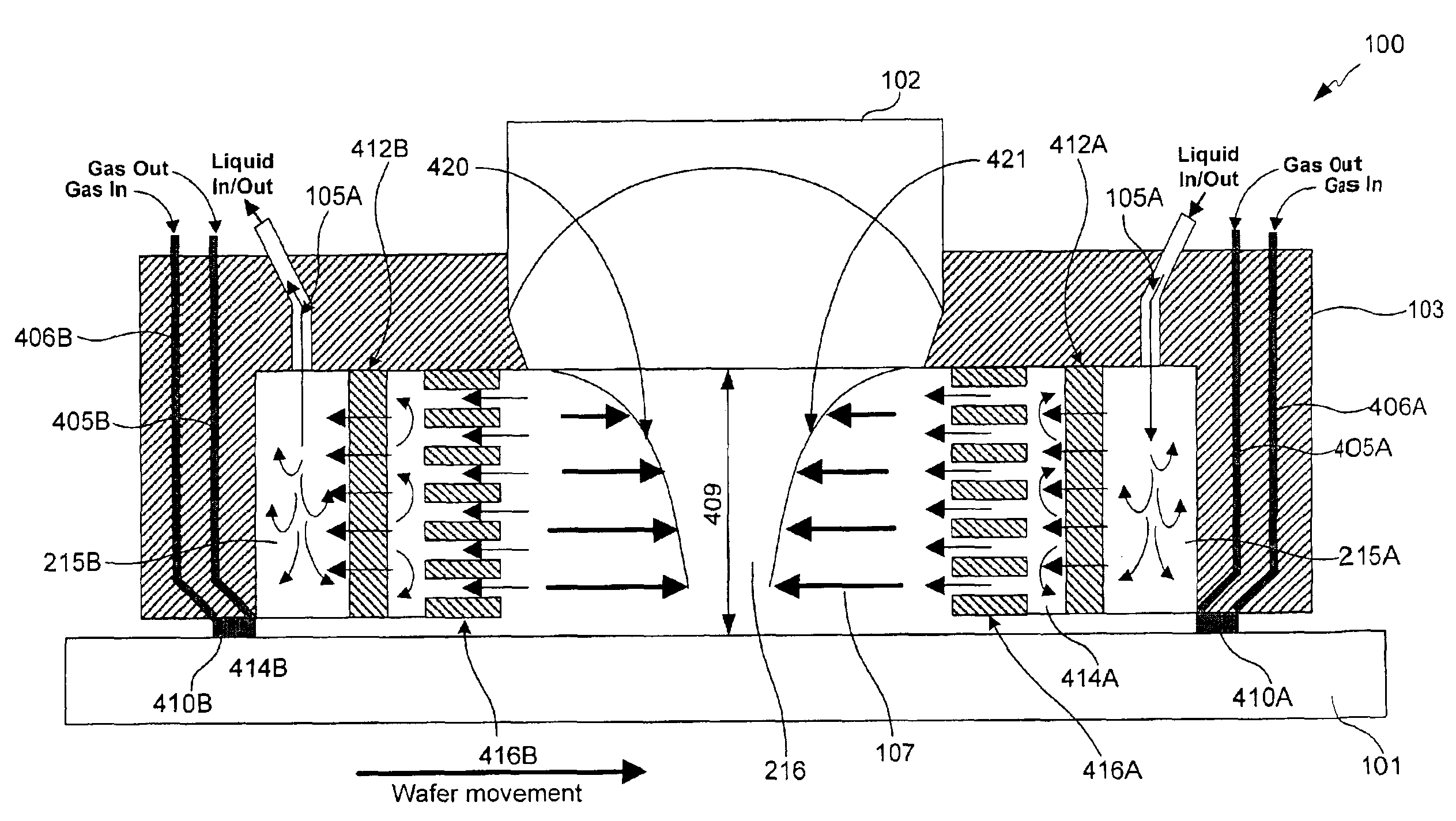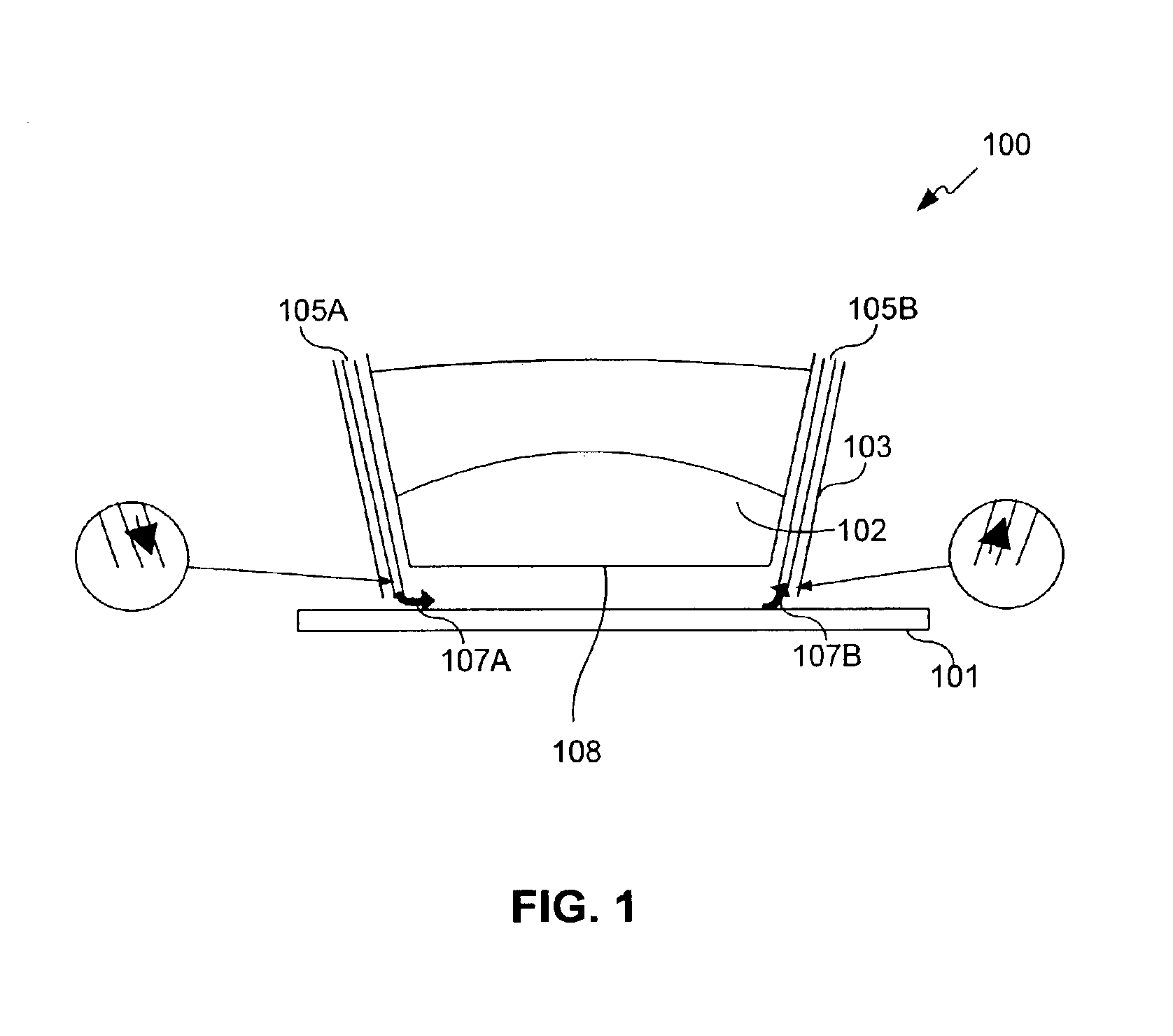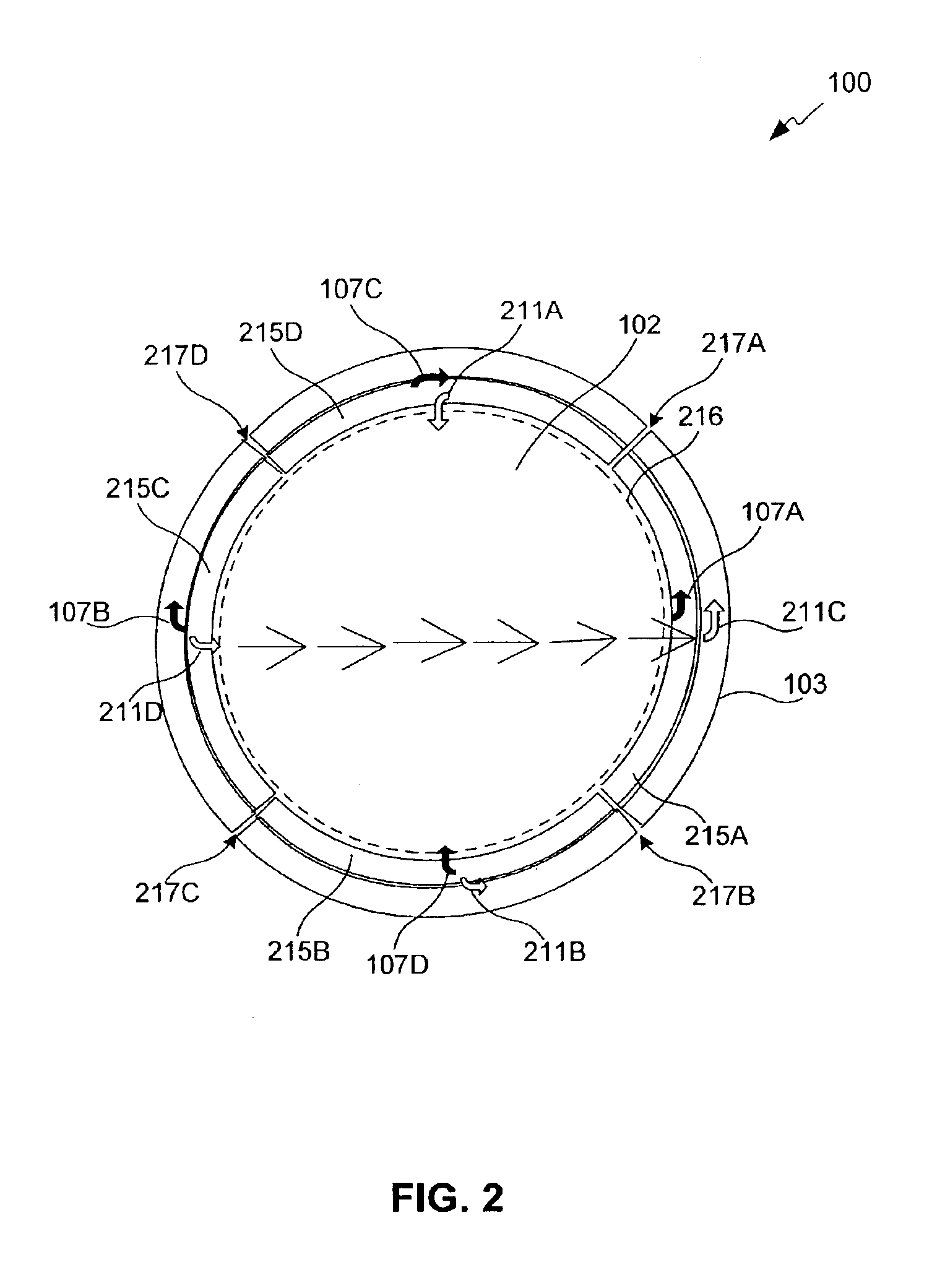Immersion photolithography system and method using microchannel nozzles
a technology of immersion photolithography and microchannel nozzles, which is applied in the direction of printing, instruments, electrical equipment, etc., can solve the problems of optical distortion, optical lithography limit, and commercialization of immersion photolithographic systems
- Summary
- Abstract
- Description
- Claims
- Application Information
AI Technical Summary
Benefits of technology
Problems solved by technology
Method used
Image
Examples
Embodiment Construction
Reference will now be made in detail to the embodiments of the present invention, examples of which are illustrated in the accompanying drawings.
One major problem in immersion photolithography is the non-uniformity of the liquid flow, particularly its gradient in the vertical direction. The non-uniformity is due primarily to the fact that near a moving surface, the liquid is in contact with that surface (e.g., a surface of a wafer). For example, during scanning, the wafer moves relative to the exposure system, creating a “dragging effect” near its surface. Thus, the laws of fluid dynamics dictate that the fluid velocity relative to the wafer surface is zero in those areas (or at least close to zero), while fluid velocity is maximum further away from the wafer surface. Similarly, the fluid velocity relative to the bottom surface of the lens is zero. These fluid velocity variations are known as “boundary layer” velocity profiles. The combination of these effects produces a shearing fo...
PUM
 Login to View More
Login to View More Abstract
Description
Claims
Application Information
 Login to View More
Login to View More - R&D
- Intellectual Property
- Life Sciences
- Materials
- Tech Scout
- Unparalleled Data Quality
- Higher Quality Content
- 60% Fewer Hallucinations
Browse by: Latest US Patents, China's latest patents, Technical Efficacy Thesaurus, Application Domain, Technology Topic, Popular Technical Reports.
© 2025 PatSnap. All rights reserved.Legal|Privacy policy|Modern Slavery Act Transparency Statement|Sitemap|About US| Contact US: help@patsnap.com



